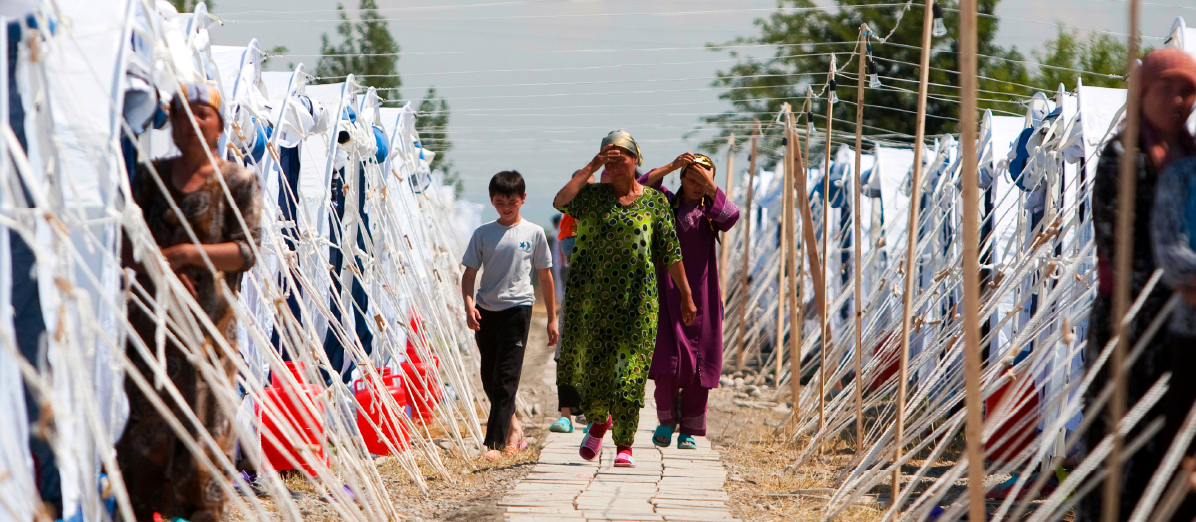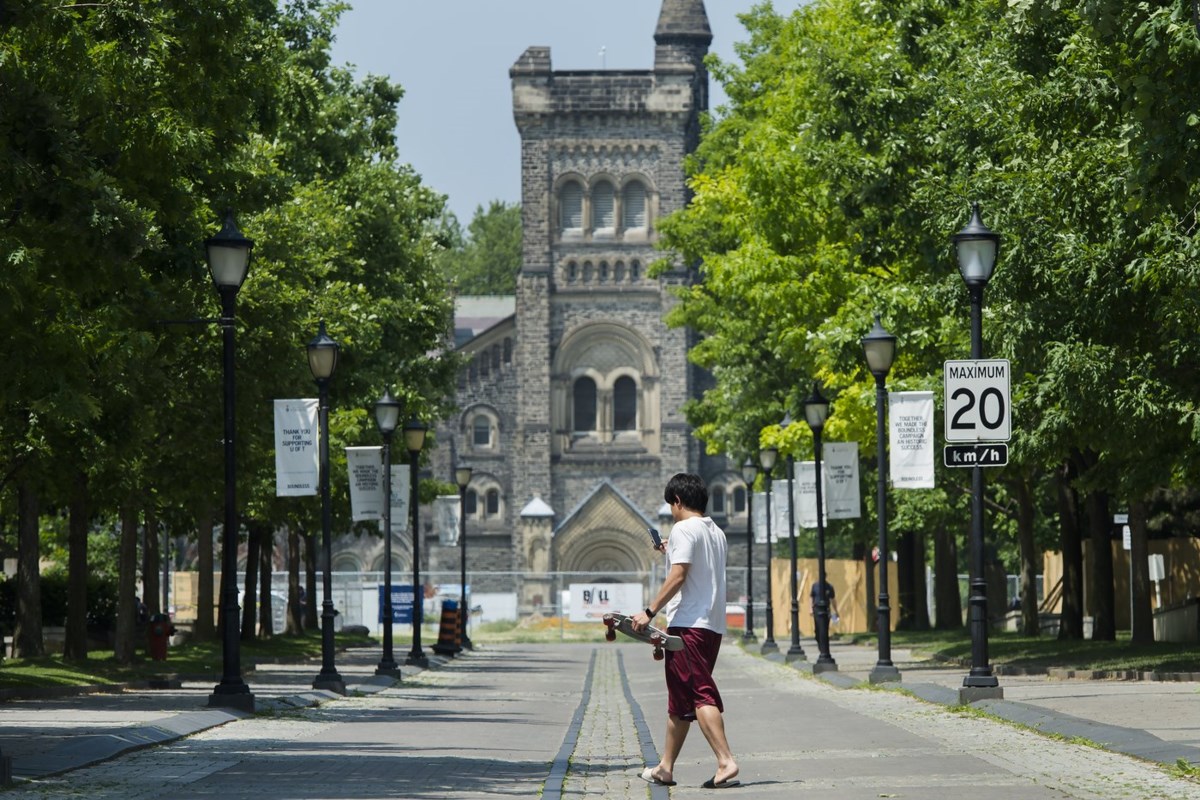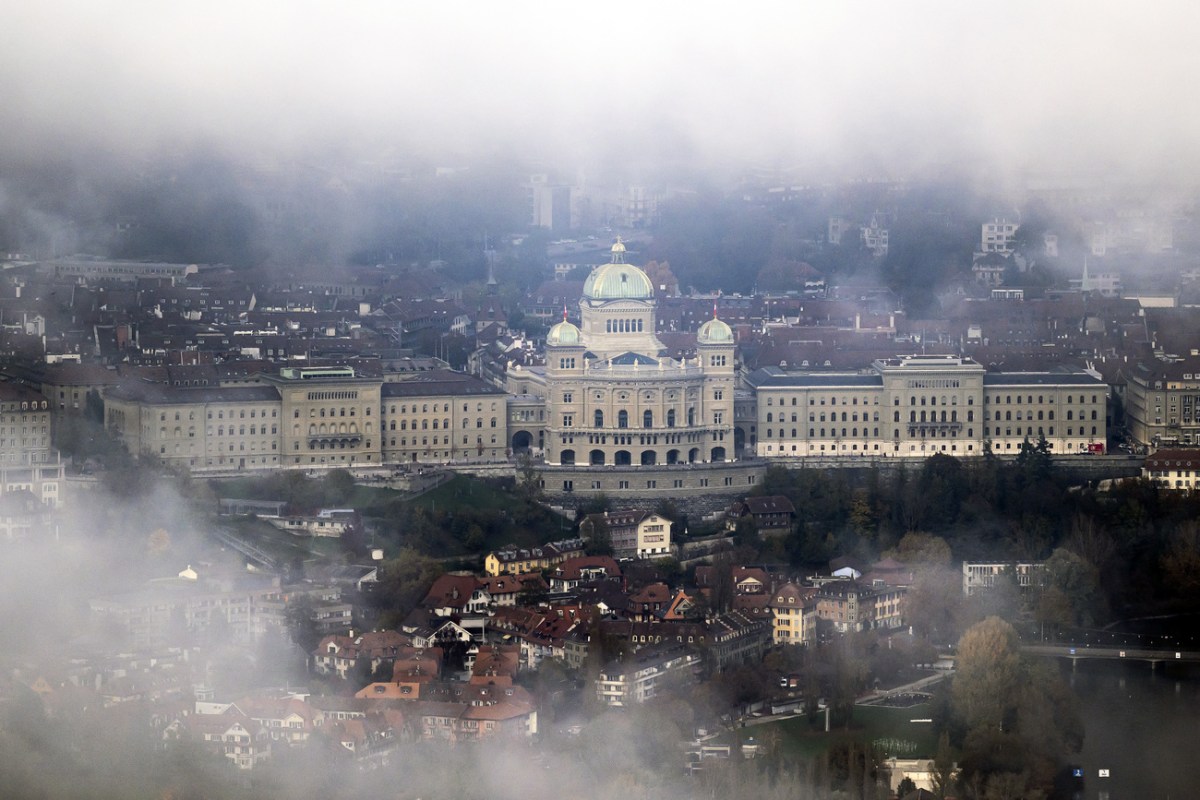Central Asian Presidents Meet, Seeking to Defuse Decades of Tensions in the Ferghana Valley - Foreign Policy Research Institute

Introduction The Ferghana Valley has been the most restive area in Central Asia since the five Central Asian states became independent after the collapse of the Soviet Union in late 1991. Kyrgyzstan, Tajikistan, and Uzbekistan each have sections of the Ferghana Valley, a region approximately the size of the Central American country Belize, that is home to more than 20 percent of the total population of Central Asia. The borders drawn during Soviet times have caused numerous problems. Additionally, the Ferghana Valley is generally a deeply religious area that has already produced one of Central Asia’s most infamous Islamic terrorist groups. The presidents of those three Central Asian countries recently held a historic and long overdue meeting to discuss how to ease tensions and concerns in the Ferghana Valley and work together to develop the valley’s rich potential. However, given the recent history of the Ferghana Valley, the three countries face some formidable challenges. An Unprecedented Meeting On March 31, something unprecedented happened in Central Asia: The presidents of Kyrgyzstan, Tajikistan, and Uzbekistan gathered in the Ferghana Valley to celebrate long-overdue successes and discuss a new era of cooperation. It might not seem like much, but relations between the three countries have often been turbulent, and it was not possible to get all three leaders to meet alone to discuss issues that were important for the three Central Asian states. The history of the Ferghana Valley since late 1991, when the Central Asian states became independent, tells the story of the aggravated ties between Kyrgyzstan, Tajikistan, and Uzbekistan, even when they faced common threats. That history also explains why the meeting of Kyrgyz President Sadyr Japarov, Tajik President Emomali Rahmon, and Uzbek President Shavkat Mirziyoyev in Khujand, Tajikistan on March 31 was such a historic event. A Land of Abundance The Ferghana Valley is the most fertile area in all of Central Asia and for this reason it is the location of some of Central Asia’s most ancient settlements. Fruits and vegetables are plentiful as is grazing land for herds. The valley is surrounded by the Tien-Shan Mountains to the north and east and the Pamir Mountains to the south and southeast, which provide the Ferghana Valley with generous amounts of water, a stark contrast to the western third of Central Asia, which is covered by desert. There are various figures for the size of the Ferghana Valley, but most agree it is roughly 8,500 square miles. The size of Central Asia, all five countries, is some 1,500,000 square miles. The Ferghana Valley is also Central Asia’s richest melting pot of peoples, who currently number around 17 million (of the nearly 80 million people in Central Asia). The titular nationalities of the three countries sharing the Ferghana Valley account for the bulk of inhabitants, but there are also Dungans (Hue in China), Meskhetian Turks, Chechens, Russians, Afghans, and representatives of other Inner Asian peoples. In the last 2,5000 years, Greeks, Chinese, Arabs, Mongols, and other empires and hordes have left their mark on the Ferghana Valley. Presently, nearly half of Kyrgyzstan’s population lives in the valley or in the mountains around it, and about 30 percent of Uzbekistan and Tajikistan’s population also live in the valley. Islam took root in many areas of Central Asia during the Arab invasions of the 7th and 8th centuries, but especially so among the relatively large, sedentary population of the Ferghana Valley. Today, the majority of people in the Ferghana Valley are Muslim and generally deeply religious and conservative. There are “dry” towns and villages in the valley where alcohol has been banned. Less than twenty years ago, Chorkuh, Tajikistan, near the Kyrgyz border, was being locally governed under Shari’a or Islamic law. Women wore veils and some even wore the all-concealing burqa. Not surprisingly, several radical or extremist Islamic groups have been able to recruit new supporters in the Ferghana Valley, and the governments of the region keep close watch on religious activities there. Border Problems Prior to the arrival of the Russians, there were no borders in the Ferghana Valley, save those that locals enforced. In the 18th and 19th centuries, the Ferghana Valley was incorporated within the Kokand Khanate (with the capital Kokand located in the Ferghana Valley) that stretched to Tashkent in the west and areas of modern-day southeastern Kazakhstan in the north. Even after Tsarist Russia conquered Central Asia in the late 19th century, administratively, the area was designated as (Russian) Turkestan. Ethnic groups were and remain scattered all over the valley and in larger towns, and cities are intermingled. Up until the time Soviet mapmakers drew the lines for the Central Asian republics, the Ferghana Valley had never been formally divided using ethnic designations. The term “stan” means “land of” and it had little meaning when Kyrgyzstan (called Kirghiziya during Soviet times), Tajikistan, and Uzbekistan were Soviet republics, but it did acquire significance after independence. When the Soviet Union collapsed in late 1991, and the five Central Asian states became independent, the borders they inherited often did not conform properly to the demographic of the titular nationality and nowhere was this more pronounced than in the Ferghana Valley. Hundreds of thousands of ethnic Uzbeks live in the Ferghana Valley areas of southern Kyrgyzstan and northern Tajikistan. There are Tajik towns in Kyrgyzstan and Kyrgyz towns in Uzbekistan. Among the most striking examples of Soviet administrative divisions in the Ferghana Valley is Uzbekistan’s enclave of Soh which is well inside Kyrgyzstan’s territory and at the time of 1991 independence was inhabited almost entirely by ethnic Tajiks. Add to this concerns over access to water and arable or grazing land and it becomes a volatile mixture that has produced dozens of border conflicts and thousands of casualties since 1991. For most of the 1990s, the Kyrgyz, Tajik, and Uzbek governments had little urgency to define their exact borders in the Ferghana Valley. Checkpoints were established at border crossings not long after independence, but there was no rush to formally determine and the mark the location of the borders. This changed in summer 1999 when a domestic terrorist group, the Islamic Movement of Uzbekistan (IMU), appeared in Kyrgyzstan’s section of the Ferghana Valley. The IMU leaders were originally from Namangan in Uzbekistan’s section of the valley, and one of them, Tohir Yuldash, was part of thousands of Muslims who were calling for Shari’a law in Uzbekistan just weeks after 1991 independence. They and many of the group’s original militants left Uzbekistan after authorities cracked down on the Shari’a protests and went to Tajikistan where a civil war started in spring 1992. There they joined the Islamic Renaissance Party of Tajikistan, the main group in a coalition that was fighting against government forces. The Tajik civil war ended with the signing of a peace accord on June 27, 1997. The peace agreement gave government positions to the wartime opposition but also stipulated that the opposition’s fighters either join the national armed forces or disarm. There was no longer any place for foreign fighters in peacetime Tajikistan and the final stage of the disarmament process was set for early August 1999. So, in early August, a group of some twenty armed IMU fighters descended from Tajikistan’s mountains into southern Kyrgyzstan and seized a remote mountain village and its residents. The Kyrgyz government had no idea who the militants were and sent negotiators to find out what they wanted. The negotiators were also taken hostage. After more than a week of this stalemate, Kyrgyz authorities paid a ransom to the militants and the militants left. Days later, hundreds of IMU militants came down out of Tajikistan’s mountains, seizing several remote villages and taking more hostages. The militants released a statement announcing they were part of the IMU, and their goal was to overthrow the regime of former Uzbek President Islam Karimov. They said they did not view Kyrgyzstan as an enemy and requested Kyrgyz authorities grant them safe passage to the Uzbek border. Armed Uzbek citizens coming from bases in Tajikistan’s mountains to attack areas in southern Kyrgyzstan should have moved the Kyrgyz, Tajik, and Uzbek governments to coordinate their actions. Instead, Kyrgyzstan declined an offer of Uzbek military assistance, though it did briefly grant Uzbekistan’s air force permission to bomb militant positions in the Kyrgyz mountains. Uzbekistan warned Kyrgyzstan not to allow the IMU militants to approach Uzbekistan. Both the Kyrgyz and Uzbek governments called on Tajikistan to do something to neutralize IMU bases in Tajikistan, but Tajik authorities initially claimed there was no IMU presence in Tajikistan. Uzbek warplanes bombed an area in the Tajik mountains near the village of Hait without informing the Tajik government ahead of time. With winter approaching, the IMU accepted a deal to leave Kyrgyzstan—after collecting another ransom—and be ferried from Tajikistan, where the government had finally acknowledged IMU presence in the country, to northern Afghanistan aboard Tajik border guard helicopters. None of the three governments was satisfied with the arrangement and they all knew the IMU would return, which it did in summer 2000. Uzbekistan started placing landmines along its border with Kyrgyzstan. When the IMU entered the mountains of southeastern Uzbekistan from Tajikistan in summer 2000, Uzbekistan put landmines along the Tajik border also. There were no reports of the landmines killing any militants, but over the following years dozens of civilians in Kyrgyzstan and Tajikistan, usually shepherds or people collecting firewood, were killed or maimed by these landmines. Work to remove the landmines along the Kyrgyz border started in 2004, but removal along Uzbekistan’s border with Tajikistan did not start until after Mirziyoyev became Uzbekistan’s president in late 2016 and was not completed until 2020. After the IMU’s 1999 and 2000 incursions, new border posts were established along all the borders in the Ferghana Valley, requiring all three countries to bring in additional troops and military equipment. Anyone moving in the hills and fields along the unmarked border areas in the Ferghana Valley ran the risk of being detained or shot by border guards. There were very few meetings of state officials to discuss border demarcation. When Uzbekistan and Kyrgyzstan renewed border negotiations in August 2017, then Kyrgyz Deputy Prime Minister Jenish Razakov, who headed Kyrgyzstan’s delegation to the meeting, recalled the two countries had not held border talks since 2006. Increased restrictions on border crossing helped stoke tensions around the Tajik enclave of Vorukh and Uzbek enclave of Soh, both inside Kyrgyzstan. Vorukh has a population of more than 35,000, and Uzbekistan’s Soh enclave a population of more than 80,000. Clashes between communities along the Kyrgyz-Tajik border have been happening for some fifteen years. Many of these conflicts occurred in the area around Vorukh. Vorukh is connected to Tajikistan proper by a single road that meanders back-and-forth across the Kyrgyz-Tajik border, and in some places the road is the border: On one side is Kyrgyzstan, on the other Tajikistan. Vehicles with Kyrgyz license plates were sometimes targeted by stone-throwers when passing through Tajikistan, and the same was true for cars and trucks with Tajik license plates when they went through Kyrgyz territory. Passengers were sometimes harassed and occasionally beaten by the other country’s border guards at checkpoints. Kyrgyzstan eventually built roads that detoured around Vorukh, but residents of the Tajik enclave still have to use the road passing through Kyrgyz territory to reach Tajikistan. When disputes over land use and suspicions about water use spark fighting between communities along the border, the road is often closed, temporarily leaving Vorukh cut-off from Tajikistan. In late April 2021 and mid-September 2022, Kyrgyzstan and Tajikistan fought brief but fierce battles along their border. More than 200 people were killed in the two conflicts and there was widespread damage to buildings and infrastructure on both sides of the border. In both incidents, there were battles around Vorukh. The situation around Soh is similar. The main road connecting the Kyrgyz cities of Osh and Batken once passed through Soh, but after the IMU incursions, Uzbekistan greatly restricted passage through the enclave and Kyrgyzstan responded by building a detour around Soh. There have been incidents of vandalism and fist-fights between Kyrgyz and Soh residents in addition to some larger clashes. In July 2009, Kyrgyz border guards allegedly beat a teenager from Soh because he could not speak Kyrgyz. Tensions simmered and in May 2010, residents of Soh waylaid several vehicles with Kyrgyz license plates, beat the passengers, and vandalized the cars. Kyrgyz villagers blocked the road to Soh, and Uzbekistan sent additional military forces to the enclave. Negotiations and the promise of compensation for the damaged vehicles defused the situation. In May 2020, residents of Soh and Kyrgyz villagers clashed when a dispute broke out over water use. More than 100 people were injured and several houses were burned down. There was also the stand-off at Ungar-Too, a mountain along the Kyrgyz-Uzbek border. Ungar-Too is one of the highest points in the Ferghana Valley, and Kyrgyzstan has a relay station there that is important for telecommunications across southern Kyrgyzstan. In March 2016, both countries increased their military presence in the Ungar-Too area during a dispute over ownership of the mountain and use of water from a nearby reservoir. Tensions eased, but in August that year the countries again fell into dispute over the nearby reservoir that Uzbeks call Kasan-Say and Kyrgyz call Orto-Tokoy. On August 22, Uzbek forces seized Ungar-Too and the employees working at the relay station. Uzbek helicopters brought more soldiers and equipment to the mountain, and it seemed the two countries were headed for an armed conflict. However, Karimov went into a coma at the end of August and was pronounced dead on September 2. His successor, Mirziyoyev, ordered the Kyrgyz relay station employees released and Uzbek troops off Ungar-Too. Ripple Effects There were also incidents that occurred in one country that sent shockwaves throughout the valley. The violence in the Uzbek city of Andijan in May 2005 started when a small group of armed men crossed from Kyrgyzstan in the early morning of May 13, attacked an Uzbek police station, seized the weapons there, and then staged a prison break at a nearby penal facility. The armed men and some of the escaped prisoners provoked violence at what had been a peaceful protest in Andijan that had been ongoing for a week. Rioting broke out, and local authorities lost control of the city. The Uzbek government sent troops to Andijan and opened fire indiscriminately on anyone out in the streets. Officially, 189 people were killed—soldiers, insurrectionists, and civilians—but witnesses put the figure closer to 1,000, with most of the victims being civilians. Tens of thousands of people fled across the border into Kyrgyzstan. In 2010, violence erupted in southern Kyrgyzstan between ethnic Uzbeks and Kyrgyz. More than 400 people were killed, most of them Uzbeks. Parts of Osh and Jalal-Abad were destroyed. Tens of thousands of Uzbeks fled into Uzbekistan before Uzbek authorities closed the border, leaving several hundred thousand more Uzbek refugees gathered along the Kyrgyz side of the border. In September 2010, a militant from Jamaat Ansarullah, the Tajik wing of the IMU, drove a car packed with explosions into a police station in Khujand, Tajikistan, killing himself and two policemen, wounding twenty-eight others, and sparking concerns along the nearby borders of Kyrgyzstan and Uzbekistan. A Historic Meeting During all of this and more, the leaders of the three countries sharing the Ferghana Valley never called a special summit to discuss these problems that were creating severe concerns among all three countries. The March 31 Khujand summit came less than three weeks after Kyrgyzstan and Tajikistan finally signed an agreement delimitating the last disputed sections of their border. Rahmon went to Bishkek to sign the border deal. It was his first state visit to Kyrgyzstan’s capital in nearly twelve years (Rahmon was later in Bishkek for summits of the Shanghai Cooperation Organization, the Russian-led Collective Security Treaty Organization, and the Commonwealth of Independent States). Uzbekistan’s final border agreements with Kyrgyzstan and Tajikistan were also completed in the last three years. The Khujand summit was heavy on symbolism. The three presidents participated via video link with an unveiling ceremony for a monument at the junction where the three countries meet. Kyrgyzstan and Tajikistan flipped the switch to launch a power transmission line that connects their countries and aim—possibly by late 2026—to allow them to export electricity from their hydropower stations to Afghanistan and Pakistan. But the greatest moment was simply seeing the leaders of these three countries sitting in the same room to discuss a future of cooperation that starts with sharing and developing the Ferghana Valley, an area that has for more than thirty years been the reason for so much division between Kyrgyzstan, Tajikistan, and Uzbekistan. Image: Ethnic Uzbeks walk between tents at a refugee camp in the village of Yorkishlak on the Kyrgyz-Uzbek border, some 400 km (249 miles) east of Tashkent, June 18, 2010. REUTERS/Shamil Zhumatov


















